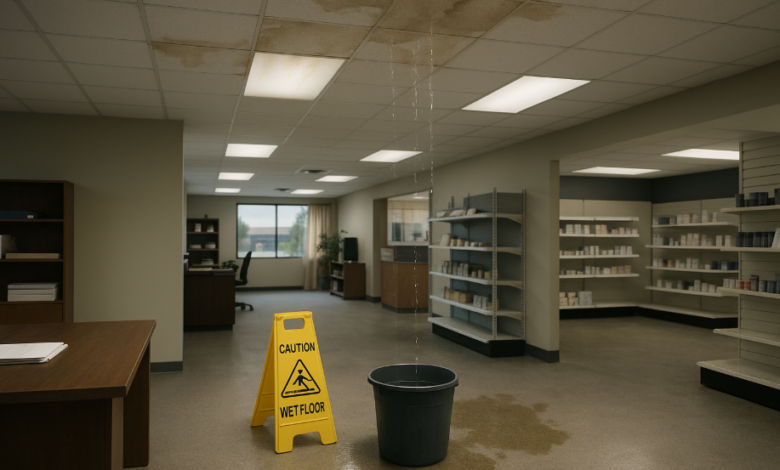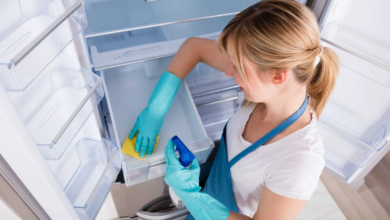From Leaks to Lawsuits: How Neglected Roofs Can Lead to Legal Headaches

A roof is more than just a structural necessity—it’s a silent guardian, shielding your business, employees, assets, and customers from the elements. But when it’s neglected, what starts as a minor leak can escalate into a major legal liability. In the commercial property world, deferred roof maintenance isn’t just a risk to your building—it’s a risk to your entire business.
Failing to address roofing issues on time doesn’t just increase repair costs. It opens the door to health hazards, insurance problems, tenant disputes, and even lawsuits. In today’s increasingly litigious business environment, ignoring roof maintenance is a gamble few can afford.
The Legal Risks of Roof Neglect in Commercial Properties
Water Damage Liability and Occupant Safety
A leaking roof can cause interior water damage that leads to mold, weakened drywall, and unsafe flooring. If tenants, employees, or customers are exposed to a hazardous condition due to roof-related water intrusion, you could be held legally responsible.
If someone slips on wet flooring caused by a leak, suffers respiratory issues from mold exposure, or gets injured from falling debris, your business may be exposed to a personal injury claim. In such cases, failing to maintain the roof could be deemed negligence, making legal defenses harder to mount.
Lease Violations and Tenant Lawsuits
Landlords who lease commercial property have a legal obligation to maintain safe and habitable premises. Most commercial lease agreements include maintenance clauses requiring the property owner to keep the roof in good condition.
When water damage disrupts operations or damages tenant inventory or equipment, tenants may seek damages for breach of contract. A business tenant forced to close due to mold or structural damage may also sue for lost revenue. Getting a roof inspection tulsa ok before these issues arise can help landlords fulfill their obligations and avoid tenant disputes.
Health Hazards That Trigger Legal Consequences
Mold Growth and Indoor Air Quality
Unaddressed roof leaks often lead to mold development in walls, insulation, and ceilings. Mold isn’t just unsightly—it can cause respiratory issues, allergic reactions, and long-term health problems. In buildings where the public or employees are regularly present, this poses serious health concerns.
If a tenant, customer, or staff member claims they were sickened due to poor air quality stemming from a known roof issue, the legal consequences can be severe. In some cases, local health departments may even mandate building closures until the issue is resolved—adding reputational harm on top of legal exposure.
Code Violations and Government Penalties
Local building codes typically require commercial properties to meet certain structural and safety standards. A failing or leaking roof may violate these codes, particularly if it causes internal deterioration, electrical system exposure, or safety hazards.
Code violations can lead to government fines, failed inspections, or denial of business permits. Proactive maintenance and timely repairs—prompted by a roof inspection tulsa ok—can keep your property compliant and protect your operations from regulatory delays.
See also: Setting Up a Home Server: A Complete Guide
Insurance Claims Denied: A Common Pitfall
The “Neglect” Clause in Commercial Policies
Commercial property insurance is designed to protect against unexpected events, not preventable damage. Most policies have exclusions for claims arising from neglect or deferred maintenance. If your roof fails and your insurer determines the damage could have been avoided with proper upkeep, your claim may be denied.
Denied claims not only leave you with the full cost of repairs—they can impact future premiums or even your eligibility for coverage. Insurance carriers expect property owners to take reasonable steps to prevent damage, and that includes keeping the roof in serviceable condition.
Documenting Maintenance for Coverage
To maximize the chances of a successful claim, you must be able to prove that the roof was maintained. Records of regular inspections, repairs, and contractor reports are valuable evidence. Without these, it’s difficult to refute an insurer’s claim that damage resulted from owner neglect.
Scheduling a roof inspection tulsa ok provides documented proof of due diligence, helping to protect your insurance rights and lower the risk of disputes.
Business Interruption and Financial Fallout
Downtime Due to Roof Failure
If your roof fails, your business may be forced to shut down temporarily to address safety hazards, water removal, or repairs. In the worst cases, valuable inventory may be lost or your operations permanently disrupted.
Business interruption coverage may offset some of these losses—but only if your claim is approved. If damage is determined to be preventable, not only will coverage be denied, but your company may also face long-term reputational damage from extended downtime.
Cost of Legal Defense and Settlements
Even if your business ultimately prevails in a lawsuit, legal costs can be steep. Attorney fees, expert witnesses, and court expenses add up quickly. Settling may seem like the cheaper route, but it still results in out-of-pocket payments and potentially higher insurance rates.
Preventing a lawsuit in the first place—by investing in inspections and repairs—is often far less expensive than navigating the legal system. A proactive roof inspection tulsa ok can help identify vulnerabilities and save thousands in potential litigation.
Common Roofing Issues That Lead to Legal Trouble
Here are a few of the most common problems that can spiral into legal consequences if not addressed:
- Pooling water: Can lead to mold, membrane deterioration, and structural failure.
- Damaged flashing: Allows water to enter around roof penetrations and walls.
- Punctures or tears: Often caused by foot traffic or falling debris.
- Clogged drains or gutters: Result in standing water and ice buildup.
- Neglected repairs: Small issues left unaddressed grow into major liabilities.
Each of these issues is relatively easy to detect during a professional inspection—and less expensive to fix when caught early.
Best Practices to Protect Your Business and Property
Schedule Regular Roof Inspections
Experts recommend inspecting commercial roofs at least twice per year and after major weather events. Regular assessments ensure that small problems are detected before they escalate and help establish a paper trail of proactive maintenance.
Hiring a local provider familiar with regional weather conditions—like those offering roof inspection tulsa ok—ensures your property is assessed with environmental context in mind.
Keep Maintenance Logs and Repair Records
Maintain a file of all inspections, maintenance invoices, repair photos, and contractor reports. This documentation proves your commitment to safety and upkeep, making it easier to defend against liability or support insurance claims.
Respond to Issues Immediately
Don’t delay repairs or ignore warning signs like ceiling stains or musty odors. A fast response not only reduces physical damage—it demonstrates responsibility and concern for the safety of occupants.
Conclusion: Small Leaks, Big Consequences
A commercial roof in disrepair is more than just a maintenance issue—it’s a legal and financial liability waiting to happen. From injury lawsuits to denied insurance claims, the consequences of neglect can disrupt your operations and damage your business reputation.
The good news? These risks are entirely preventable. Through routine inspections, prompt repairs, and a proactive maintenance mindset, you can protect your investment—and your business—from leaks that could lead to lawsuits.




